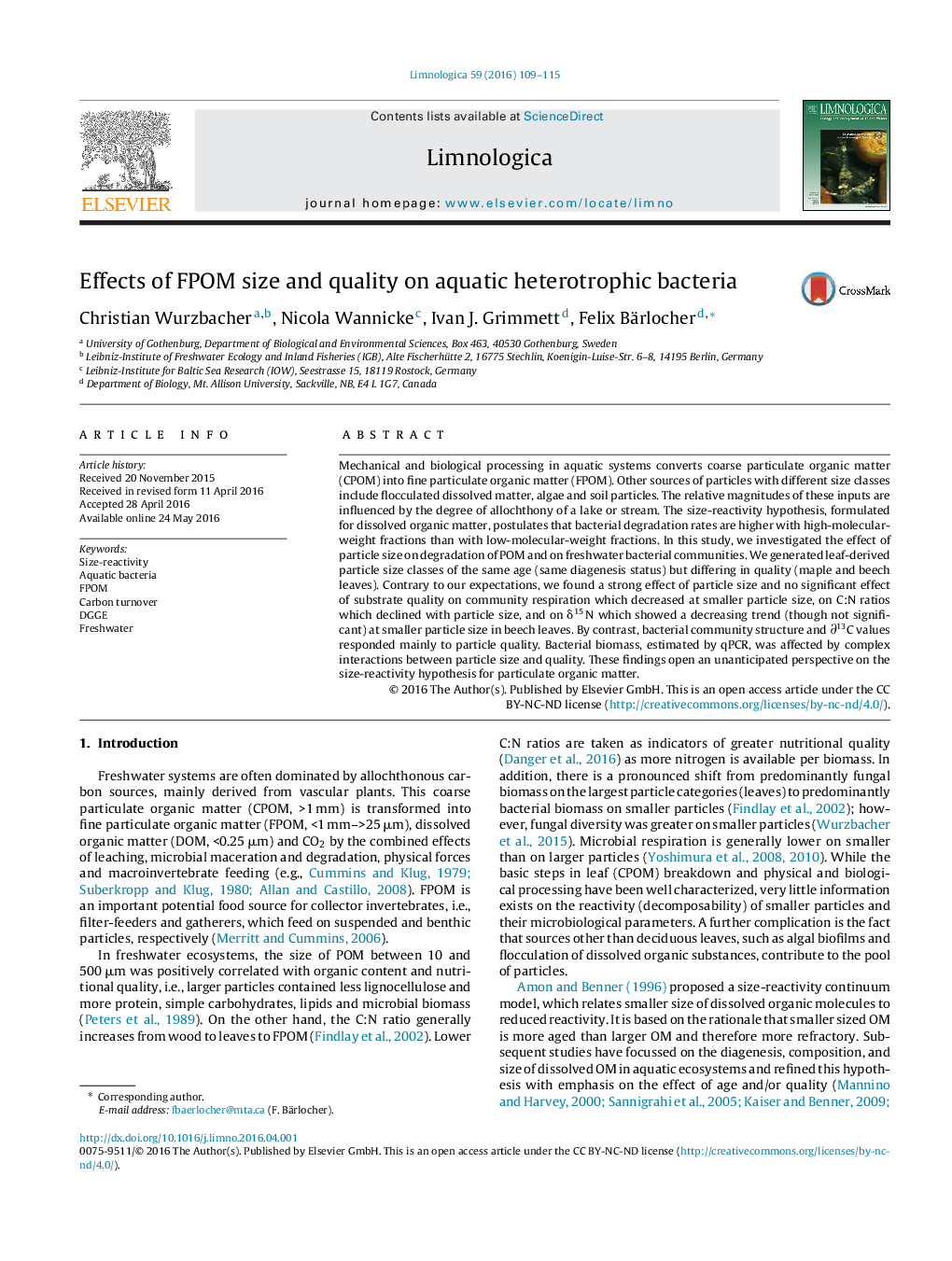| Article ID | Journal | Published Year | Pages | File Type |
|---|---|---|---|---|
| 6305517 | Limnologica - Ecology and Management of Inland Waters | 2016 | 7 Pages |
Abstract
Mechanical and biological processing in aquatic systems converts coarse particulate organic matter (CPOM) into fine particulate organic matter (FPOM). Other sources of particles with different size classes include flocculated dissolved matter, algae and soil particles. The relative magnitudes of these inputs are influenced by the degree of allochthony of a lake or stream. The size-reactivity hypothesis, formulated for dissolved organic matter, postulates that bacterial degradation rates are higher with high-molecular-weight fractions than with low-molecular-weight fractions. In this study, we investigated the effect of particle size on degradation of POM and on freshwater bacterial communities. We generated leaf-derived particle size classes of the same age (same diagenesis status) but differing in quality (maple and beech leaves). Contrary to our expectations, we found a strong effect of particle size and no significant effect of substrate quality on community respiration which decreased at smaller particle size, on C:N ratios which declined with particle size, and on δ15 N which showed a decreasing trend (though not significant) at smaller particle size in beech leaves. By contrast, bacterial community structure and â13C values responded mainly to particle quality. Bacterial biomass, estimated by qPCR, was affected by complex interactions between particle size and quality. These findings open an unanticipated perspective on the size-reactivity hypothesis for particulate organic matter.
Related Topics
Life Sciences
Agricultural and Biological Sciences
Aquatic Science
Authors
Christian Wurzbacher, Nicola Wannicke, Ivan J. Grimmett, Felix Bärlocher,
